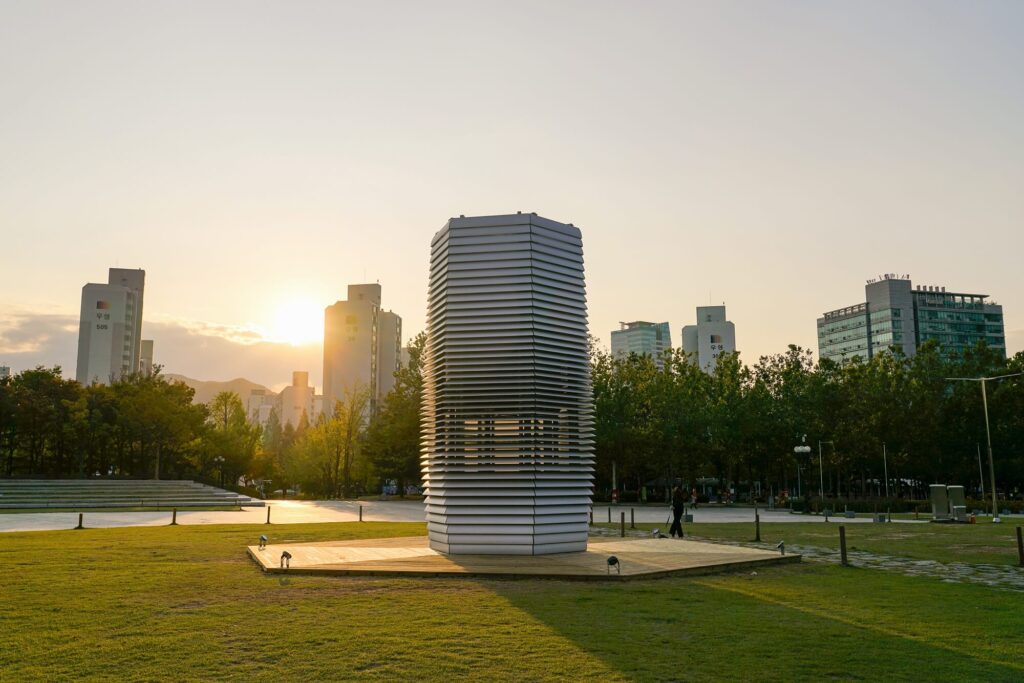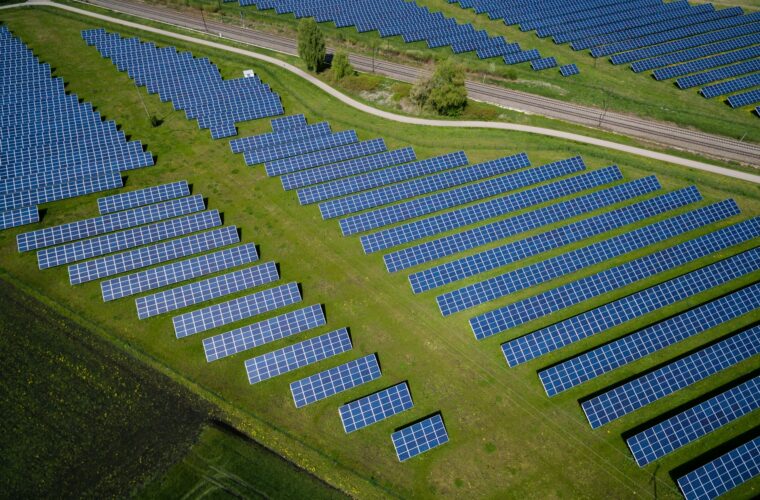The Smog Free Project is about the dream of clean air
Cities versus our health?
Who wouldn’t want to live in cities where the price we pay for our comfort is not our health? Who wouldn’t want to live in cities while at the same time have access to clean air and clean water as well as natural elements, like green spaces? Today, unfortunately, even when we sit in a park in the middle of major cities, we are breathing polluted air. This is due to the distorted proportion between the amount of nature surrounding us and the industrial processes serving our comfort. We have lost the balance. The impact our life has on nature is so extreme that we cannot reverse it in a simple way anymore and all the fantastic technologies that help make our life comfortable are now seriously impacting our health.
According to the WHO, air pollution kills an estimated seven million people worldwide every year. WHO data demonstrates that 9 out of 10 people breathe air that exceeds WHO guideline limits containing high levels of pollutants, and low- and middle-income countries suffer from the highest exposures. The substances most commonly responsible for pollution are sulfur dioxide, nitrogen oxides, particulate matter, volatile organic compounds, heavy metals, and odors. Combustion plants, mostly power plants and combined heat and power plants, are considered the most important sources of sulfur dioxide emissions. In the second place are housing and combustion processes in the industry. Nitrogen oxides are emitted mainly from transport, metallurgy, and cement plants. These air pollution types combined are often referred to as smog. Originally the word smog comes from the combination of two words: smoke and fog and was used to refer to the phenomena observed in London in the early 1950s.
Polluted air – a social problem
Air quality has actually become one of he most important social problems humans need to tackle. The emission of most pollutants is closely related to the volumen of industrial production. Decreased pollution levels could be reached via reducing production levels, which in our highly industrialized world, only happens involuntarily during economic crises. However, a decrease in emissions may also be achieved by improving production processes, exploring new technologies and better emission-reduction systems, and changing local regulations.
Let’s purify the air we breathe
We need to adopt changes in many different ways, and one is using technology at our hand to purify the air around us in order to protect our health. More and more designers and engineers are interested in and finding ways to tackle pollution.
Dan Roosegaarde, the father of the Smog Free Tower is a Dutch artist and innovator, aims just at this. He explores the relation between people, technology, and space. He, himself, questioned the whole idea of us accepting the quality of the air we breathe in cities. He is a Young global Leader at the World Economic Forum and featured by Forbes and Good 100 as a creative change maker. Dan Roosegaarde’s studio in Rotterdam, in the Netherlands, was founded in 2007, where engineers and designers work towards a better future.
The sudio has so far been the winner of the Successful Design Award China, Ethics Ethical Award, Grand Award for Sustainability, BUILD Architecture Awards 2020, Europe 40 Under 40 Awards, Design That Educates Award, Gold Award Design For Asia, Platinum A’Design Award, and German Design Award Excellent Product Design among others.
The technology behind smog-free air

The team, by designing the Smog Free Tower, which is a gigantic smog vacuum tower, used an already existing air purifying technology, but a stronger one, to clean the air in public spaces. The development process of the tower took more than three years. The Smog Free Tower has been implemented in the Netherlands, Poland, China, South Korea and Mexico so far. On a bad day, in big Chinese cities even the other side of the road may not be visible due to smog. China is – paradoxically speaking – one of the best examples for serious smog pollution. In the winter of 2016-17, a heavy and unprecedented smog pollution occured, in which Northern Chinese areas around Beijing suffered the most. As a result, the Ministry of Science and Technology in China also started a special research programme to control pollution by similar technological developments. Now in China, there are other towers built aiming at purifying the air based on similar concepts. However, smog does not need to be extremely visible to cause health issues. Major cities across the globe are affected by smog pollution. These extreme examples are eye-openers for policy-makers and innovators alike.
The Smog Free Tower in Rotterdam is located in a public park called Vierhavensstraat 52. It is seven meters high, installed with ionization technology, lightweight construction and LED lights. Each and every hour the Smog Free Tower cleans 30.000 cubic meters of air by removing ultra-fine smog. In addition, the Smog Free Tower only relies on a small amount, 1170 watts of green energy. The tower’s specialty, other than the very unique design and low energy consumption, is that it has a manufacturing process that transforms the smog residue into fine jewelry.
The tower sucks air in on the top and the polluted air goes through a safe and tested purification system, which is similar to the ones that are used in hospitals. Then the clean air is released through vents on the six-sided tower-like structure. It actually captures and collects more than 75% of the PM2.5 and PM10 airborne smog particles. Studio Roosegarde’s innovation is unique in another way, too: it produces jewelry of the collected smog particles. The carbon-filled smog dust is compressed into jewelry items, for example rings and cufflinks. Can you image that each piece actually contains smog dust from 1000 cubic meters of air?
The whole idea of Studio Roosegaarde started as a result of Roosegaarde’s dissatisfaction with people having to accept that they are constantly breathing polluted air. The Smog Free Tower is part of a project which campaigns against air pollution and envisions a clean future. Within the project there are other innovations as well providing a local solution, such as the Smog Eating Billboard, which was launched at UDEM University in Mexico, providing clean air for 104.000 people every single day. It contains a coated surface that attracts and purifies air particles by a process called photocatalysis using sun and wind. The Smog Free Bicycle is an innovative bicycle that inhales polluted air and releases clean air around the cyclist. There are also workshops with governments, students and clean-tech companies trying to work together to make cities smog free. Research by the Eindhoven University of Technlogy has validated the effect of the Smog Free Tower.
I believe that change always starts with small steps. If we have more purifying systems across cities, it will be a great solution to have access to clean air. Furthermore, what may even be a more significant achievement of the Smog Free Tower and similar innovations is their symbolic meaning bringing about awareness. When we actually stop and realize the magnitude of the problem and its effect on our own life and health, we may consider changing our own habits and consumption patterns that currently feed the industrial processes.



